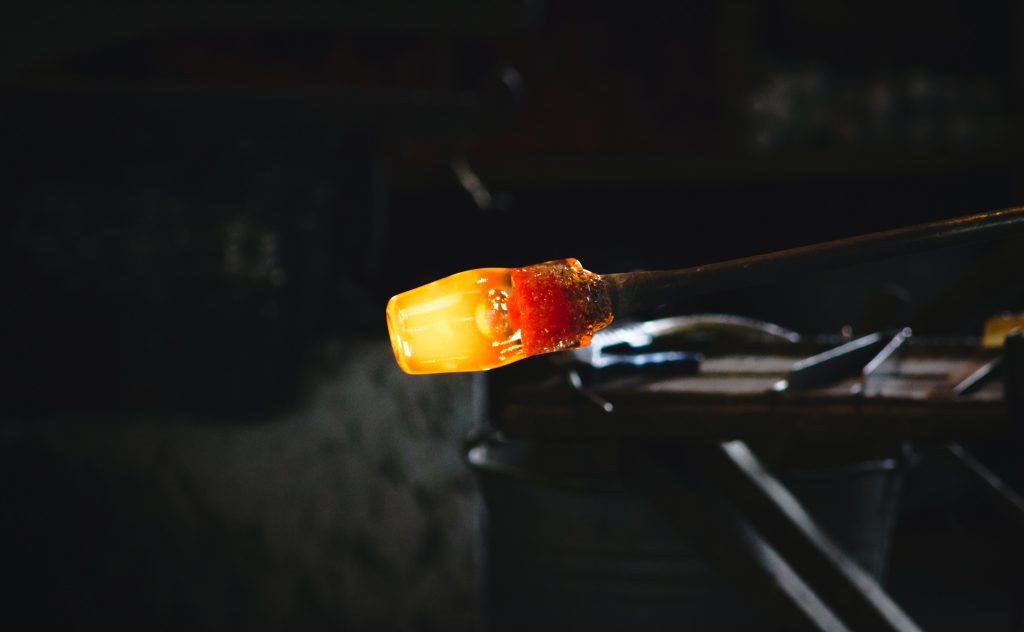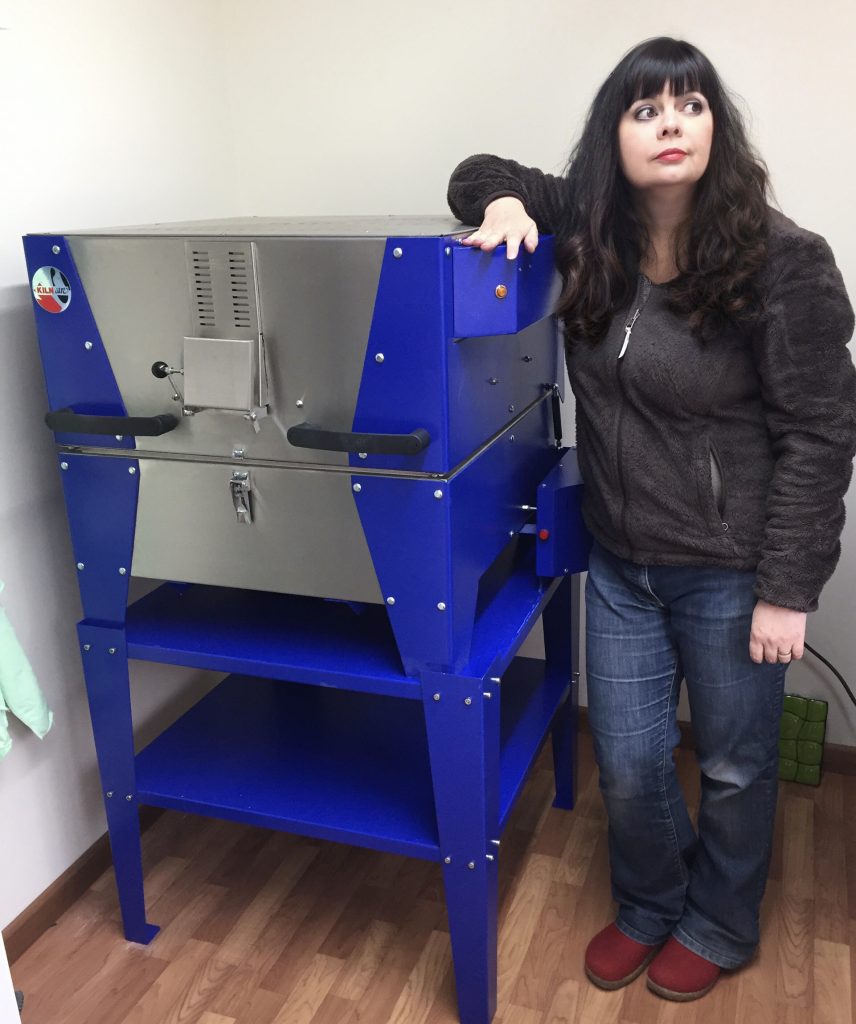When I meet people for the first time (this was a LONG time ago…I have, since Covid, lost all social abilities…), they ask me what I do as a job. When I say I’m a glass fuser, the assumption is immediately that I have a furnace going 24/7 and I spend my life blowing into a steel pipe to make pretty things.
You see, people think I’m a glass blower. It’s glass blowing which involves a steel pipe and funnily enough, blowing into it. This assumption has led me to write this blog: what is the difference between glass blowing and glass fusing? And where does ‘slumping’ come into it?
Glass blowing
Glass blowing involves very bloody hot furnaces. This is the reason it’s referred to as ‘hot glass’ (whereas glass fusing is known as ‘warm glass’). In the first furnace, known as the Crucible, clear glass is melted. It is from this furnace that the first load of melted molten glass is collected onto the blow pipe.
After collecting the clear glass, colour can be added by rolling this molten glass into coloured glass powder. The glass is worked on at this point by rolling it to shape and blowing into the pipe to create a bubble. Whilst the glass is worked to shape, it goes in and out of the second furnace, (called the Glory Hole…). This keeps the glass at the workable temperature and allows the coloured glass to melt into the clear glass.
Finally, there’s the annealing furnace, which is also known as the kiln: this cools the glass at a controlled rate down to room temperature, usually over a period of 14 hours. This slow cooling prevents the glass from thermal shock, resulting in a cracked piece.

Glass Fusing
Glass fusing is using an electric kiln to melt two or more pieces of glass together. If glass fusers want coloured glass pieces, they generally use sheet glass which is already coloured. They can also use glass powder but this is added to the sheet glass at the cold stage, and is heated onto the glass in the kiln, rather than collecting powder onto a piece of molten glass.
Fusers also have to anneal their work to prevent thermal shock however, rather than having a separate annealing kiln, the annealing stage is programmed into the overall firing schedule in the one kiln.
As for shaping, whilst glass blowers shape by rolling the glass and blowing into the pipe, fusers ‘slump’ their glass into shape. This is a separate firing in the kiln: the glass is heated and then as it softens, it ‘slumps’ into the shape of the mould required.
As you can see, the two processes are very different. There is something quite wild and dangerous about glass blowing. I have seen it in action and it is a fascinating process. I literally could have watched all day.

Clumsy As F…
Here’s the thing though: if you know me and/or Rich even slightly, you would know without asking that we could never be glass blowers. We are both very clumsy. Only yesterday, Rich knocked his glasses off just getting into the car. At a friend’s house, many moons ago, Rich walked into their patio door and broke his glasses. The patio door had those bird stickers on to stop birds from flying into it, but turns out they don’t work on humans. I once fell over in town, prompting an elderly lady to ask me if I was alright. Indeed it was a monumental fall in the student café at University which lead to me doing fused glass in the first place: I was on a doctorate course in Psychology and the embarrassment of that incident meant I never went back to university again after that day.
So, you see we could never have furnaces anywhere where we are. The only advantage of them would be not having to pay for cremation after accidentally falling head-first into one of them.
